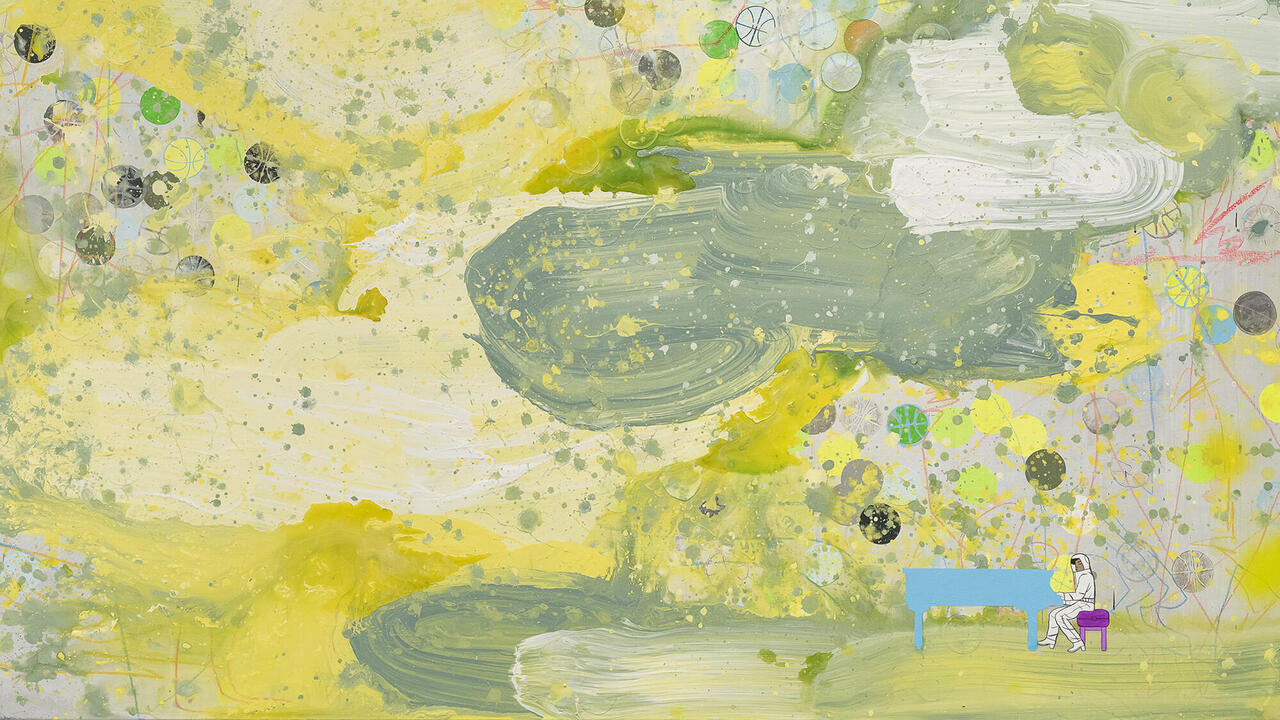Camden Arts Centre re-opening

The old Camden Arts Centre wore its former life as a gloomy Victorian library rather lightly. Although the space was clammy and claustrophobic, over the past decade it hosted some of London's most dynamic exhibitions of contemporary art, in addition to providing classes for the local community. The building's intimate rooms were ideal for a monographic survey - the Paul Thek show was exemplary - and its moderate size made for digestible thematic shows, such as Susan Hiller's excellent 'Dream Machines'. Following Tony Fretton's recent transformation of the building, light and warmth have penetrated its dampest corners, so the new design and its exhibition history should combine to create a contemporary art venue to rival any in the world.
While it is perhaps inevitable that the first exhibition at the refurbished centre should look designed to advertise its strengths as a space, it still comes as a disappointment. Oliver Godow's photographs and muf's installation offer the most literal illustrations of the Centre's history but suffer from a presentation that treats them as greeting cards for the new space. Although Godow's works are clear, useful and sometimes haunting, the way they have been hung here and there throughout the space looks indecisive. Their double status as document and art is interesting, so why not give them their own gallery rather than treat them like memorabilia? The art and design collective muf designed the Centre's garden, and their installation in the Reading Room traces - obliquely - their process. The floor of the room is scattered with paper flowers (one with its price tag still attached), and a computer monitor displays snippets of text that seem to be a random set of answers to the question 'what is art?' or 'what does art mean to you?' The garden (not quite ready) looks lovely, but the small room felt enervated, occupied by an afterthought. However, one of the quotes - 'Well the philosophy of art I find a non-subject quite honestly' - resonates in an exhibition that lacked an argument.
Christopher Wool's abstractions are a good choice to show off the elegance of Gallery 1, a large rectangular space with a blend of natural and artificial light perfect for painting. The selection of 17 mostly black and white paintings - sprayed, smeared and printed, with hints of Sigmar Polke, Brice Marden and Robert Rauschenberg - look so at home they could make a permanent installation. Jacques Nimki's exceedingly subtle pencil drawings based on local weeds decorate the walls of the central staircase and look, by contrast, poignantly evanescent. Their stylized stems and leaves emerge from pencil-drawn cracks in the walls as if scrawled surreptitiously by a fin-de-siècle doodler.
Two installations hint at how the Centre might work best in the future. Cerith Wyn Evans' Rabbit's Moon (2004) is a single black chandelier flashing in Gallery 3, a large room with windows overlooking noisy Finchley Road. Alone in the long room, the chandelier looms like a ghost, as if it were a stubborn denizen from the old building flashing menacingly at anyone who might dare remove it. The flashing is, of course, that Wyn Evans speciality, a Morse code message in this case, Raymond Williams' definition of the word 'image', taken from his 1974 book Keywords. The installation is evocative in the space, transforming the windows into eerie presences at night, framed spaces that flash with an obsolete language. Associations ricochet, from the 'Rabbit in the Moon' of Japanese culture (we see cheese, they see a rabbit) to the oddness of an opaque chandelier, destabilizing the definition of image being transmitted to the public. Yet, compared with his Morse code piece at last year's Venice Biennale, Rabbit's Moon was mildly unsatisfying, perhaps because the use of an academic definition of 'image' felt heavy-handed in the context of a new public space. Rachel Harrison, on the other hand, uses the space transparently to allow the viewer to focus on the work. Posh Floored as Ali G Tackles Becks (2004) consists of two videos and a few sculptures indefinable objects coated in plaster, painted and often topped by a soft drink can. In one video a Dalmatian dog chomps on a big bone to a sound-track of a bad pop song; in the other, a rotating display case turns endlessly, exhibiting cheap watches on glass shelves above a lurid satin backdrop. As a whole, the installation is uncompromisingly grotesque, each video an image of imperturbable appetite, and the sculptures sit in the room like yearning creatures caked in the sludge of capitalist desire.
Overall, Camden's first exhibition betrayed a feeling of reserve and good taste, as if the space itself had become a vain débutante still preening herself immediately after her makeover. While this is an understandable result of the relaunch, I am looking forward to the next few shows, when the building gets a little scruffier. Harrison's and Nimki's work resisted the showroom atmosphere and thereby did a better job of advertising the strength of the space. And if they left Nimki's drawings to fade away beneath the fingers of the curious it would be a beautiful way to trace the building's history.
















